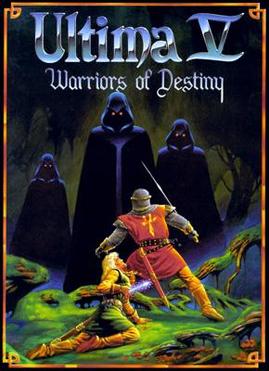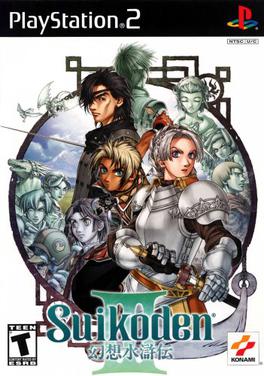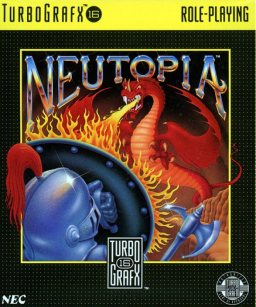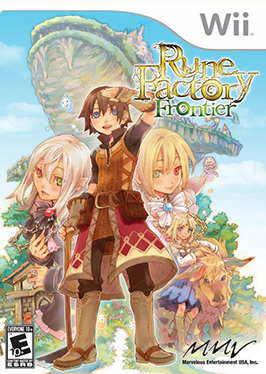A multi-user dungeon, also known as a multi-user dimension or multi-user domain, is a multiplayer real-time virtual world, usually text-based or storyboarded. MUDs combine elements of role-playing games, hack and slash, player versus player, interactive fiction, and online chat. Players can read or view descriptions of rooms, objects, other players, and non-player characters, and perform actions in the virtual world that are typically also described. Players typically interact with each other and the world by typing commands that resemble a natural language, as well as using a character typically called an avatar.

RuneQuest is a fantasy tabletop role-playing game originally designed by Steve Perrin, Ray Turney, Steve Henderson, and Warren James, and set in Greg Stafford's mythical world of Glorantha. It was first published in 1978 by The Chaosium. Beginning in 1984, publication passed between a number of companies, including Avalon Hill, Mongoose Publishing, and The Design Mechanism, before finally returning to Chaosium in 2016. RuneQuest is notable for its system, designed around percentile dice and an early implementation of skill rules, which became the basis for numerous other games. There have been several editions of the game.

Ultima is a series of open world fantasy role-playing video games from Origin Systems, created by Richard Garriott. Electronic Arts has owned the brand since 1992. The series had sold over 2 million copies by 1997.
RuneScape is a fantasy massively multiplayer online role-playing game (MMORPG) developed and published by Jagex, released in January 2001. RuneScape was originally a browser game built with the Java programming language; it was largely replaced by a standalone C++ client in 2016. The game has had over 300 million accounts created and was recognised by the Guinness World Records as the largest and most-updated free MMORPG.
Suikoden is a series of role-playing video games created by Yoshitaka Murayama. The games are loosely based on the classical Chinese novel Water Margin, whose title is rendered as Suikoden (水滸伝) in Japanese. Each individual game centers on themes of politics, corruption, revolution, mystical crystals known as True Runes, and the "108 Stars of Destiny"—the 108 protagonists who are loosely interpreted from the source material.

The Rök runestone is one of the most famous runestones, featuring the longest known runic inscription in stone. It can now be seen beside the church in Rök, Ödeshög Municipality, Östergötland, Sweden. It is considered the first piece of written Swedish literature and thus it marks the beginning of the history of Swedish literature.

Cliff Bleszinski, popularly known as CliffyB, is an American video game designer, known for his work on the Unreal and Gears of War series while at Epic Games. After leaving Epic in 2012, he co-founded Boss Key Productions in 2014 which closed in 2018 after the commercial failure of the multiplayer shooter LawBreakers. Since Boss Key's closure, Bleszinski has spent his time with theater and writing.

Castlevania: Lament of Innocence is a 2003 action-adventure game developed by Konami Computer Entertainment Tokyo and published by Konami for the PlayStation 2 console. Part of Konami's Castlevania video game series, it is the first installment of the series on the PlayStation 2 and the third to make use of a 3D style of gameplay. It was released in Japan and North America in late 2003 and Europe and Australia in early 2004.

A rune is a letter in a set of related alphabets known as runic alphabets native to the Germanic peoples. Runes were used to write Germanic languages before they adopted the Latin alphabet, and for specialised purposes thereafter. In addition to representing a sound value, runes can be used to represent the concepts after which they are named (ideographs). Scholars refer to instances of the latter as Begriffsrunen. The Scandinavian variants are also known as fuþark, or futhark, these names derived from the first six letters of the script, ⟨ᚠ⟩, ⟨ᚢ⟩, ⟨ᚦ⟩, ⟨ᚨ⟩/⟨ᚬ⟩, ⟨ᚱ⟩, and ⟨ᚲ⟩/⟨ᚴ⟩, corresponding to the Latin letters ⟨f⟩, ⟨u⟩, ⟨þ⟩/⟨th⟩, ⟨a⟩, ⟨r⟩, and ⟨k⟩. The Anglo-Saxon variant is futhorc, or fuþorc, due to changes in Old English of the sounds represented by the fourth letter, ⟨ᚨ⟩/⟨ᚩ⟩.

Ultima V: Warriors of Destiny is the fifth entry in the role-playing video game series Ultima released in March 1988. It is the second in the "Age of Enlightenment" trilogy. The game's story takes a darker turn from its predecessor Ultima IV. Britannia's king Lord British is missing, replaced by a tyrant named Lord Blackthorn. The player must navigate a totalitarian world bent on enforcing its virtues through draconian means.

Rune is an action-adventure video game developed by Human Head Studios which was released in 2000. The game is based on Ragnarok, showing the conflict between the Gods Odin and Loki and the buildup to Ragnarok. Built on the Unreal Engine, the game casts the player as Ragnar, a young Viking warrior whose mettle is tested when Loki and his evil allies plot to destroy the world and bring about Ragnarok.

Suikoden II is a role-playing video game developed and published by Konami for the PlayStation video game console and the second installment of the Suikoden video game series. It was released in late 1998 in Japan, 1999 in North America, and in 2000 in Europe. The game features a vast array of characters, with over 100 recruitable characters, of which over 40 are usable in combat.

Suikoden III is a role-playing video game developed by Konami Computer Entertainment Tokyo and published by Konami for the PlayStation 2 video game console, and the third installment in the Suikoden video game series. It was released in 2002 in Japan and North America, with a manga adaption published in 2004.

Anglo-Saxon runes or Anglo-Frisian runes are runes that were used by the Anglo-Saxons and Medieval Frisians as an alphabet in their native writing system, recording both Old English and Old Frisian. Today, the characters are known collectively as the futhorc from the sound values of the first six runes. The futhorc was a development from the older co-Germanic 24-character runic alphabet, known today as Elder Futhark, expanding to 28-characters in its older form and up to 34-characters in its younger form. In contemporary Scandinavia, the Older Futhark developed into a shorter 16-character alphabet, today simply called Younger Futhark.

Harry Potter and the Philosopher's Stone is a 2001 video game developed by Argonaut Games and published by Electronic Arts for the PlayStation. Based on the 1997 novel of the same name, the player controls Harry Potter, who must navigate his first year in the Hogwarts School of Witchcraft and Wizardry and eventually confront the villainous Lord Voldemort. The game received mixed reviews, with critics saying that the game's license would be the only thing to draw in fans. The PlayStation version sold 8 million copies by May 2003, which would become Argonaut's best-selling game and one of the best-selling PlayStation video games of all time.

Neutopia is an overhead action-adventure video game developed by Hudson Soft. It was released by Hudson for the PC Engine in Japan on November 17, 1989. It was then released by NEC for the TurboGrafx-16 in North America in 1990. It was re-released for the Virtual Console service worldwide for the Wii in 2007; it was re-released for the PlayStation Network in Japan in 2010 and in North America in 2011. It was re-released for the Wii U on April 16, 2014 in Japan, and in USA and Europe in 2017. The game takes place in the land of Neutopia, where the evil demon Dirth has captured Princess Aurora and has stolen the eight ancient medallions which contain the wisdom and power necessary to maintain peace and prosperity throughout the land. It is up to the protagonist Jazeta to retrieve the eight medallions, defeat Dirth, rescue Princess Aurora, and save the land and its people.

Suikoden is a role-playing video game published by Konami. It is the first installment of the Suikoden series. Developed by Konami Computer Entertainment Tokyo, it was released initially in 1995 for the PlayStation in Japan. A North American release followed one year later, and a mainland European release came the following April. The game was also released for Windows and Sega Saturn in 1998, but only in Japan.

There is some evidence that, in addition to being a writing system, runes historically served purposes of magic. This is the case from the earliest epigraphic evidence of the Roman to the Germanic Iron Age, with non-linguistic inscriptions and the alu word. An erilaz appears to have been a person versed in runes, including their magic applications.

Brigandine is a turn-based strategy game for the PlayStation video game console, created by developer Hearty Robin and released in 1998. It was released in North America by Atlus the same year, under the title Brigandine: The Legend of Forsena. In 2000, Hearty Robin released an expanded version of the game called Brigandine: Grand Edition, which included multiplayer support along with other new features. In the game, the player chooses one of the nations of the fictional continent of Forsena, and has the goal of conquering the other nations by taking their castles, using troops composed of humanoid commanders and fictional creatures. Although primarily a strategy game, it also includes some characteristics of tactical role-playing games.

Rune Factory: Frontier is a simulation action role-playing video game developed by Neverland and published by Marvelous Entertainment in Japan, Xseed Games in North America, and Rising Star Games in Europe for the Wii. It is the third game in the Rune Factory series.

















